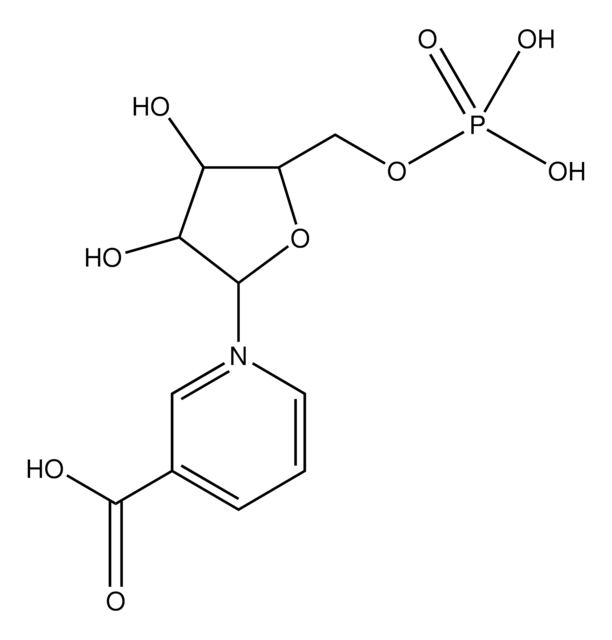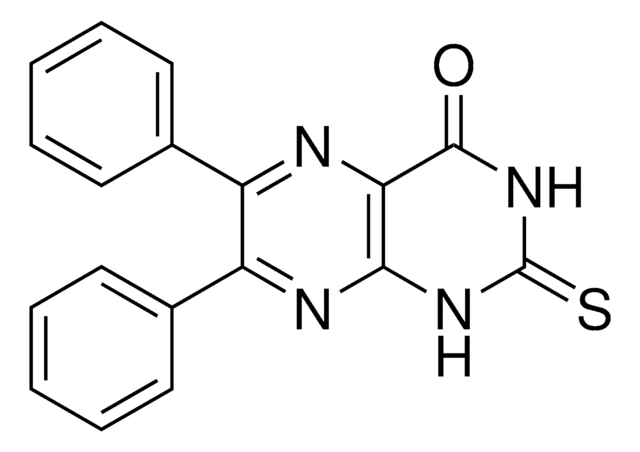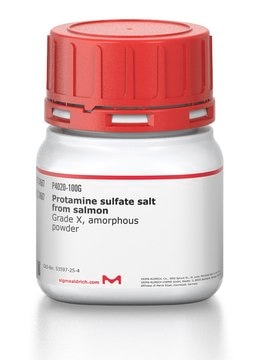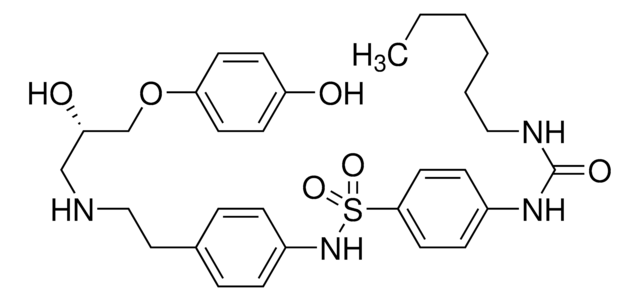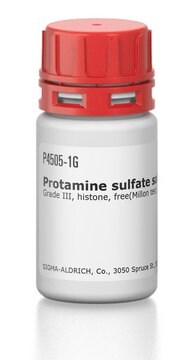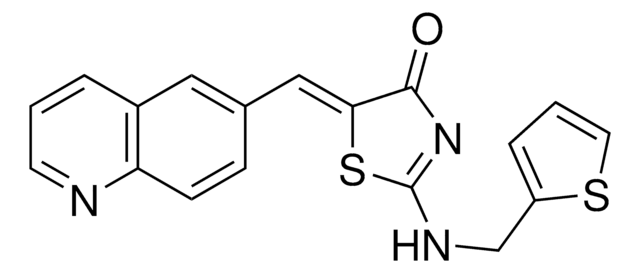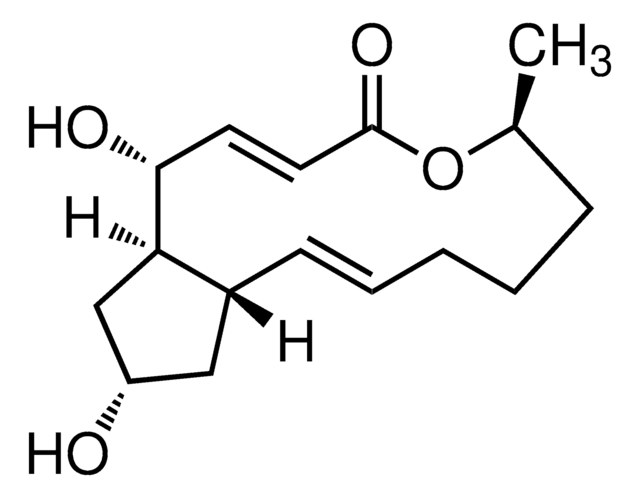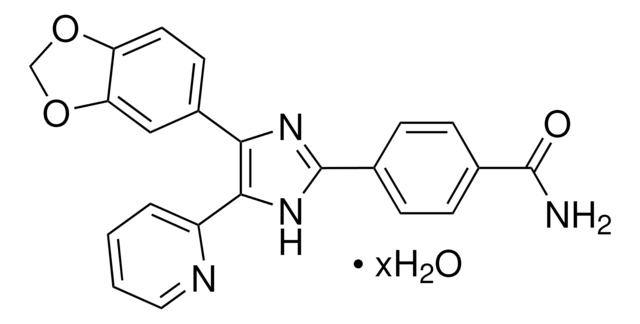R9782
RS-1
≥98% (HPLC)
Sinonimo/i:
3-[(benzylamino)sulfonyl]-4-bromo-N-(4-bromophenyl)benzamide, 4-Bromo-N-(4-bromophenyl)-3-[[(phenylmethyl)amino]sulfonyl]-benzamide, RAD51-stimulatory compound 1
About This Item
Prodotti consigliati
Livello qualitativo
Saggio
≥98% (HPLC)
Forma fisica
powder
Colore
off-white to light tan
Solubilità
DMSO: ≥10 mg/mL
Temperatura di conservazione
room temp
Stringa SMILE
Brc1ccc(NC(=O)c2ccc(Br)c(c2)S(=O)(=O)NCc3ccccc3)cc1
InChI
1S/C20H16Br2N2O3S/c21-16-7-9-17(10-8-16)24-20(25)15-6-11-18(22)19(12-15)28(26,27)23-13-14-4-2-1-3-5-14/h1-12,23H,13H2,(H,24,25)
SWKAVEUTKGKHSR-UHFFFAOYSA-N
Applicazioni
- as a homology-directed repair (HDR) agonist to study its effects on in human hematopoietic stem/progenitor cells (HSPCs)
- as HDR agonist to analyze its effects on DNA repair modulation in human induced pluripotent stem (iPS) cells
- as RAD51 agonist to study its effects on double-stranded break repair
Azioni biochim/fisiol
Codice della classe di stoccaggio
11 - Combustible Solids
Classe di pericolosità dell'acqua (WGK)
WGK 3
Punto d’infiammabilità (°F)
Not applicable
Punto d’infiammabilità (°C)
Not applicable
Certificati d'analisi (COA)
Cerca il Certificati d'analisi (COA) digitando il numero di lotto/batch corrispondente. I numeri di lotto o di batch sono stampati sull'etichetta dei prodotti dopo la parola ‘Lotto’ o ‘Batch’.
Possiedi già questo prodotto?
I documenti relativi ai prodotti acquistati recentemente sono disponibili nell’Archivio dei documenti.
I clienti hanno visto anche
Articoli
Small Molecule CRISPR Enhancers
Il team dei nostri ricercatori vanta grande esperienza in tutte le aree della ricerca quali Life Science, scienza dei materiali, sintesi chimica, cromatografia, discipline analitiche, ecc..
Contatta l'Assistenza Tecnica.
